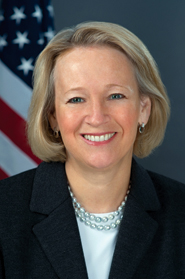Chairman Mary L. Schapiro said Thursday the Securities and Exchange Commission is upgrading its investigative technology so that it can identify “suspicious trading patterns and relationships among multiple traders and across multiple securities.’’

Even though, she said, the firms that the regulator oversees “spend more money just on their IT budgets than we spend running our entire agency,’’ she told the 2012 New England Securities Conference in Boston that the SEC will use “newly-developed analytics” to spot abuses.
The securities industry policing agency will “put better technology in the hands of our investigators,’’ she said. “Upgraded technology makes it possible to wade through literally millions of documents and thousands of hours of conversations to find the proverbial needle in a haystack that lets us sew up a case.’’
Chief among these is the agency’s infant Automated Bluesheet Analysis Project, she said. Blue sheets, no longer on blue sheets of paper, provide the SEC with detailed information about trades performed by a firm and its clients. The information, now sent in electronically, includes the security’s name, the date traded, price, transaction size and a list of the parties involved.
A new Market Abuse Unit has spearheaded the analysis project for the Division of Enforcement. With the tool, “staff are able to search across this database to recognize suspicious trading patterns and identify relationships and connections among multiple traders and across multiple securities, generating significant enforcement leads and investigative entry points,’’ according to enforcement division director Robert Khuzami.
The pattern analysis, Schapiro said, led to a case being filed earlier this year against Matthew Kluger, a corporate associate at the law firm of Wilson Sonsini Goodrich & Rosati and Garrett Bauer, a trader.
The two, Schapiro said, “ran a lucrative insider trading scheme spanning two decades.’’
In that case, Kluger “performed searches on Wilson Sonsini’ s computer network,’’ according to an SEC complaint, to identify documents establishing that a client of the firm about to participate in a merger or acquisition.
Once Kluger found the documents, he would pass the material to an intermediary who in turn used public phones or disposable mobile phones to pass on the information to Bauer.
Bauer would make trades for himself, Kluger and the intermediary, laer selling the stock after the merger or acquisition was announced.
At first, Schapiro said, “investigators were unaware either of Bauer or the middleman’s relationship with Kluger,” but analysis of blue sheet trading data led to the identification of the middleman and his relationship with Bauer. The automated system allowed the agency to identify parallel trading that “gave away the nature of their relationship.’’
The agency also has put in place an Aberrational Performance Inquiry team, she said.
That team’s inquiries focus on data on the performance of investments to identify hedge fund managers that may be engaging in fraudulent practices, before a tip is received or an examination discovers questionable behavior.
The inquiries rely on a variety of risk models and in-house technology to provide, in effect, automated tips that lead to investigations.
The agency is also using an “e-discovery” system to make wide searches of data produced for the agency by the securities industry to find “needles that might have been missed or overlooked.’’
And that system will be integrated with other tools, including technology that allows phonetic searches of voice recordings, to find leads.



